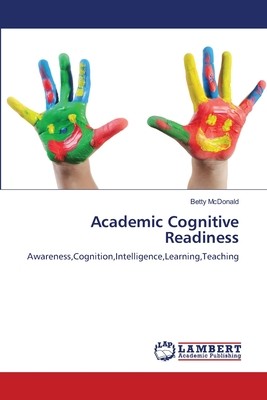
- We will send in 10–14 business days.
- Author: Betty McDonald
- Publisher: LAP Lambert Academic Publishing
- Year: 2012
- Pages: 132
- ISBN-10: 365922460X
- ISBN-13: 9783659224607
- Format: 15.2 x 22.9 x 0.8 cm, minkšti viršeliai
- Language: English
- SAVE -10% with code: EXTRA
Reviews
Description
This ground breaking book provides solace for many a grieving educator or parent who thinks s/he has done just about everything to facilitate and encourage learning and there are no visible signs of success. While it was easy getting some students to apply themselves, it was a nightmare getting others to attempt something worthy of commendation. Academic cognitive readiness appears to be the key. This book explores current literature on cognitive readiness and sequentially examines ten components identified by Morrison and Fletcher (2001): situation awareness; memory; transfer; metacognition; automaticity; problem solving; decision making; mental flexibility; leadership; and emotion. The numerous practical ways of addressing student challenges presented here make this book an authentic source of inspiration to educational institutions; industry; management personnel; students; educators; parents; volunteers and philanthropists. Shareware graphics included enable the work to appeal to a much wider audience other than academics.
EXTRA 10 % discount with code: EXTRA
The promotion ends in 23d.07:29:14
The discount code is valid when purchasing from 10 €. Discounts do not stack.
- Author: Betty McDonald
- Publisher: LAP Lambert Academic Publishing
- Year: 2012
- Pages: 132
- ISBN-10: 365922460X
- ISBN-13: 9783659224607
- Format: 15.2 x 22.9 x 0.8 cm, minkšti viršeliai
- Language: English English
This ground breaking book provides solace for many a grieving educator or parent who thinks s/he has done just about everything to facilitate and encourage learning and there are no visible signs of success. While it was easy getting some students to apply themselves, it was a nightmare getting others to attempt something worthy of commendation. Academic cognitive readiness appears to be the key. This book explores current literature on cognitive readiness and sequentially examines ten components identified by Morrison and Fletcher (2001): situation awareness; memory; transfer; metacognition; automaticity; problem solving; decision making; mental flexibility; leadership; and emotion. The numerous practical ways of addressing student challenges presented here make this book an authentic source of inspiration to educational institutions; industry; management personnel; students; educators; parents; volunteers and philanthropists. Shareware graphics included enable the work to appeal to a much wider audience other than academics.


Reviews